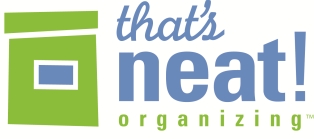Favorite Container #8: Desktop File
/This month, August, I’m back to thinking about papers as the start of school approaches. I’ve been filling out school-related forms, signing my daughter up for after-school activities, and receiving lots of information from her new teams and groups.
My all-time favorite container for organizing papers and projects is a desktop file box. Here are the details:
What: A box that is designed to hold hanging folders and files, and can sit on your desk or kitchen counter.
When to use it: Use this kind of box for your key files – files that you need to see all the time, and for current projects. My desktop file box always has these folders in it:
- Camp Ideas (for my daughter)
- Activities (for my daughter – things she may want to try)
- To Buy
- Family Meeting (any papers that my husband and I need to discuss)
- Current Projects – Home (colors for a bedroom, estimates from the painter) Current Projects – Work
How to use it: Create hanging file folders for the key papers you tend to hold on to – not for every one, but what are the general categories of papers that end up on your counter or desk? Once you have the categories set, you can use individual manila file folders to separate papers inside the hanging folder if needed. Note: The categories may change over time as you see what kinds of papers you have, so don’t be afraid to change the folders. No system is perfect at the beginning – you need to live with it and use it for a while to see what works.
Why to use it: A desktop file box helps move your papers from piles to vertical files, making them much easier to see! When you can see your papers, you can actually take them out and use them…and have a place to put them away.
Where to purchase: Basic desktop file boxes can be found at Staples and Office Max. Look on Amazon.com and The Container Store for file boxes in fun designs and natural materials.
See how a client set up her own Desktop File box in this blog post. For an idea on how to organize your financial papers, check out this recent Favorite Container post.









![MP900175492[1]_thumb.jpg](https://images.squarespace-cdn.com/content/v1/562a7312e4b092ffada95a35/1451688453713-0TH9XLGBB4PU1NUSMERH/MP900175492%5B1%5D_thumb.jpg)







